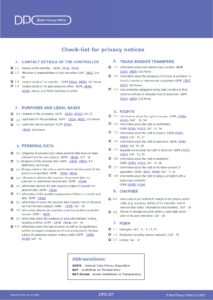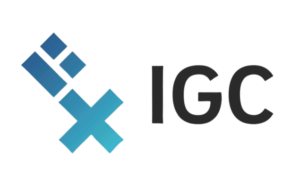(61) Les informations sur le traitement des données à caractère personnel relatives à la personne concernée devraient lui être fournies au moment où ces données sont collectées auprès d'elle ou, si les données à caractère personnel sont obtenues d'une autre source, dans un délai raisonnable en fonction des circonstances propres à chaque cas. Lorsque des données à caractère personnel peuvent être légitimement communiquées à un autre destinataire, il convient que la personne concernée soit informée du moment auquel ces données à caractère personnel sont communiquées pour la première fois audit destinataire. Lorsqu'il a l'intention de traiter les données à caractère personnel à des fins autres que celles pour lesquelles elles ont été collectées, le responsable du traitement devrait, avant de procéder à ce traitement ultérieur, fournir à la personne concernée des informations au sujet de cette autre finalité et toute autre information nécessaire. Lorsque l'origine des données à caractère personnel n'a pas pu être communiquée à la personne concernée parce que plusieurs sources ont été utilisées, des informations générales devraient être fournies.
(61) The information in relation to the processing of personal data relating to the data subject should be given to him or her at the time of collection from the data subject, or, where the personal data are obtained from another source, within a reasonable period, depending on the circumstances of the case. Where personal data can be legitimately disclosed to another recipient, the data subject should be informed when the personal data are first disclosed to the recipient. Where the controller intends to process the personal data for a purpose other than that for which they were collected, the controller should provide the data subject prior to that further processing with information on that other purpose and other necessary information. Where the origin of the personal data cannot be provided to the data subject because various sources have been used, general information should be provided.
(62) Toutefois, il n'est pas nécessaire d'imposer l'obligation de fournir des informations lorsque la personne concernée dispose déjà de ces informations, lorsque l'enregistrement ou la communication des données à caractère personnel est expressément prévu par la loi ou lorsque la communication d'informations à la personne concernée se révèle impossible ou exigerait des efforts disproportionnés. Tel pourrait être le cas, notamment, lorsqu'il s'agit d'un traitement à des fins archivistiques dans l'intérêt public, à des fins de recherche scientifique ou historique ou à des fins statistiques. À cet égard, devraient être pris en considération le nombre de personnes concernées, l'ancienneté des données, ainsi que les garanties appropriées éventuelles adoptées.
(62) However, it is not necessary to impose the obligation to provide information where the data subject already possesses the information, where the recording or disclosure of the personal data is expressly laid down by law or where the provision of information to the data subject proves to be impossible or would involve a disproportionate effort. The latter could in particular be the case where processing is carried out for archiving purposes in the public interest, scientific or historical research purposes or statistical purposes. In that regard, the number of data subjects, the age of the data and any appropriate safeguards adopted should be taken into consideration.
(63) Une personne concernée devrait avoir le droit d'accéder aux données à caractère personnel qui ont été collectées à son sujet et d'exercer ce droit facilement et à des intervalles raisonnables, afin de prendre connaissance du traitement et d'en vérifier la licéité. Cela inclut le droit des personnes concernées d'accéder aux données concernant leur santé, par exemple les données de leurs dossiers médicaux contenant des informations telles que des diagnostics, des résultats d'examens, des avis de médecins traitants et tout traitement ou intervention administrés. En conséquence, toute personne concernée devrait avoir le droit de connaître et de se faire communiquer, en particulier, les finalités du traitement des données à caractère personnel, si possible la durée du traitement de ces données à caractère personnel, l'identité des destinataires de ces données à caractère personnel, la logique qui sous-tend leur éventuel traitement automatisé et les conséquences que ce traitement pourrait avoir, au moins en cas de profilage. Lorsque c'est possible, le responsable du traitement devrait pouvoir donner l'accès à distance à un système sécurisé permettant à la personne concernée d'accéder directement aux données à caractère personnel la concernant. Ce droit ne devrait pas porter atteinte aux droits ou libertés d'autrui, y compris au secret des affaires ou à la propriété intellectuelle, notamment au droit d'auteur protégeant le logiciel. Cependant, ces considérations ne devraient pas aboutir à refuser toute communication d'informations à la personne concernée. Lorsque le responsable du traitement traite une grande quantité de données relatives à la personne concernée, il devrait pouvoir demander à celle-ci de préciser, avant de lui fournir les informations, sur quelles données ou quelles opérations de traitement sa demande porte.
(63) A data subject should have the right of access to personal data which have been collected concerning him or her, and to exercise that right easily and at reasonable intervals, in order to be aware of, and verify, the lawfulness of the processing. This includes the right for data subjects to have access to data concerning their health, for example the data in their medical records containing information such as diagnoses, examination results, assessments by treating physicians and any treatment or interventions provided. Every data subject should therefore have the right to know and obtain communication in particular with regard to the purposes for which the personal data are processed, where possible the period for which the personal data are processed, the recipients of the personal data, the logic involved in any automatic personal data processing and, at least when based on profiling, the consequences of such processing. Where possible, the controller should be able to provide remote access to a secure system which would provide the data subject with direct access to his or her personal data. That right should not adversely affect the rights or freedoms of others, including trade secrets or intellectual property and in particular the copyright protecting the software. However, the result of those considerations should not be a refusal to provide all information to the data subject. Where the controller processes a large quantity of information concerning the data subject, the controller should be able to request that, before the information is delivered, the data subject specify the information or processing activities to which the request relates.













(EN) ISO/IEC 27701, adopted in 2019, added additional ISO/IEC 27002 guidance for PII controllers.
Here is the relevant paragraph to article 13(2)(a) GDPR:
7.4.7 Retention
Control
The organization should not retain PII for longer than is necessary for the purposes for which the PII is processed.
Implementation guidance
The organization should develop and maintain retention schedules for information it retains, taking into account the requirement to retain PII for no longer than is necessary.
[…]
Se connecter
lire le texte complet